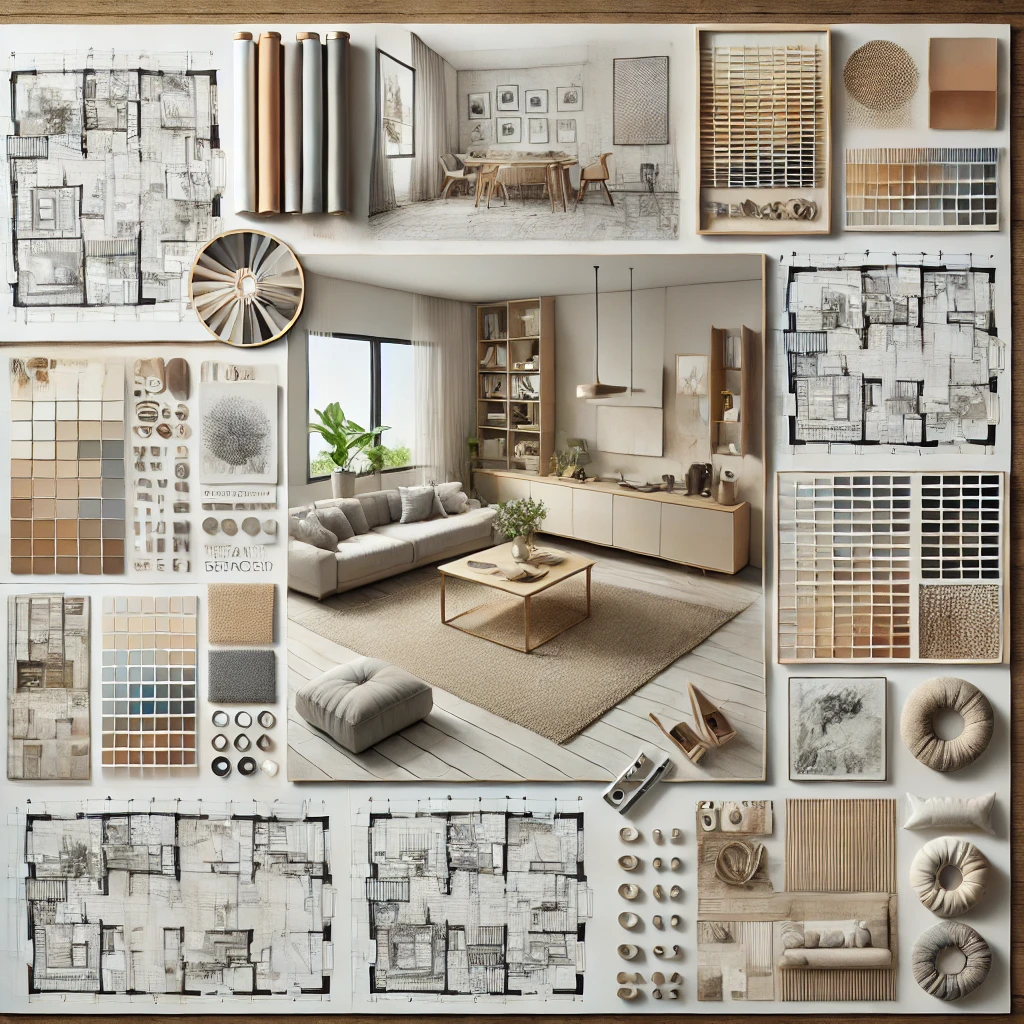
Interior design is a discipline that encompasses the design and planning process to maximize the aesthetics and functionality of a space.
An interior design project process involves many phases that must be meticulously planned and executed from start to finish. In this article, we will discuss how the interior design project process works step by step.
1. Needs Analysis and Briefing
The first step in an interior design project begins with meetings with the client. In this phase, the client’s needs, expectations, lifestyle, and budget are thoroughly analyzed.
The client’s vision and expectations from the space are the most critical factors guiding the design process. During these meetings, information is gathered to create a draft for the project, and a project brief is prepared.
2. Concept Development
Based on the brief received from the client, designers start to develop the initial concepts. During this phase, the general style of the space, color palette, material selections, and furniture layout are determined. The concept development process usually continues with presenting several design alternatives. The client chooses the concept they prefer, and the project moves on to the next phase.
3. Draft Sketches and Space Planning
Following the selection of the concept, draft sketches of the space are created. These sketches include the general layout of the space, furniture arrangement, and wall, floor, and ceiling coverings. Space planning is one of the most critical stages of interior design. Draft sketches ensure that the space is arranged in the best possible way both aesthetically and functionally. In this phase, the most suitable solutions are produced by considering all the details of the space.
4. Design Development and Detailing
After the draft sketches are approved, the project moves on to the detailing phase. In this phase, detailed plans and drawings are created for each area of the space. Furniture designs, custom pieces, lighting plans, and material selections are all determined during this phase. The design development process includes all the technical details necessary to bring the space to life.
5. Implementation and Project Management
6. Completion and Handover
After the implementation phase is completed, the project is finalized by conducting final checks. The interior designer reviews all the details before handing over the space to the client and makes the final touches. After receiving the client’s approval, the project is handed over. At this stage, customer satisfaction is paramount, and the project is ensured to have been completed as intended.
